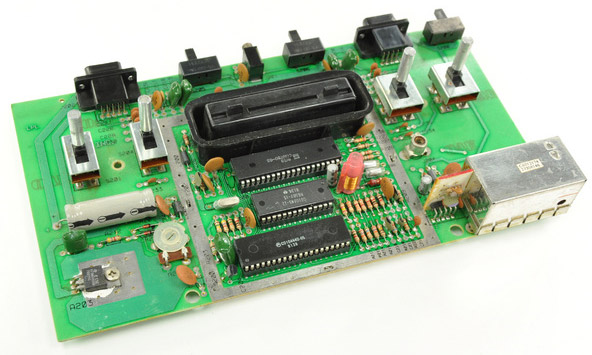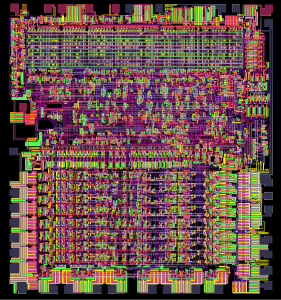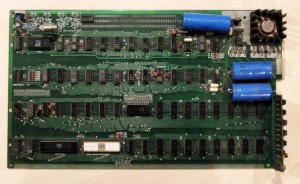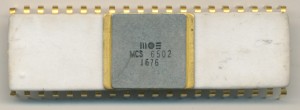September 27th, 2010 ~ by admin
Wired has an interesting article about several prototypes of rather historical devices. Of much interest are the Apple 1, and the Atari 2600 although the doorbell powered Moog is pretty classy as well.
Take a look at the Atari 2600 prototype and notice that they used a MOS 6502 in it. The final version used the lower cost (and smaller) MOS (or Synertek) 6507.

Atari 2600 Motherboard - 6507 CPU
When designing a product, it often is easier to use the standard full featured version of an IC for development work, and then as you refine the design, trim down to the least, and smallest components you can.
We also learn how Foxconn got its idea of low wages. Steve Jobs himself paid his sister a mere $1/board to assemble the Apple 1.
Its interesting to see how prototypes can be so vastly different from the finished product. A fact that design engineers know all to well. “I have to put all of THAT into what?”
September 20th, 2010 ~ by admin
Here is an interesting project. Take very high resolution photography of a MOS 6502 die (such as that the powered the Apple 1) and use it to construct a simulater in Java that allows you to program the 6502 and watch it, on a transistor level, as it performs the program.

6502 Die - Visual 6502
An awesome way to see PHYSICALLY what happens for each and every instruction. And what a great processor to do so on. Ironically the LCD flat panel monitor you may be using? It may well be powered by a 6502 (Novatek used them in their flat panel controllers)
Check it out at Visual 6502
September 10th, 2010 ~ by admin
A nice Working Apple 1 computer with much documentation was just (minutes ago) sold on eBay for $22,766.66. Early computers (and the chips that make them work) are greatly increasing in value. Especially if it happens to have the famous Apple name and customizations done by Wozniak himself.

Apple 1 Motherboard
The CPU on this board is a MOS 6502 in a beautiful white ceramic package. It moved 8 bits of data at 1MHz.

MOS MCS6502 1976
Many other computers from the 1970’s are now worth thousands of dollars as well, such as the IMSAI 8080 and the Kim 1





